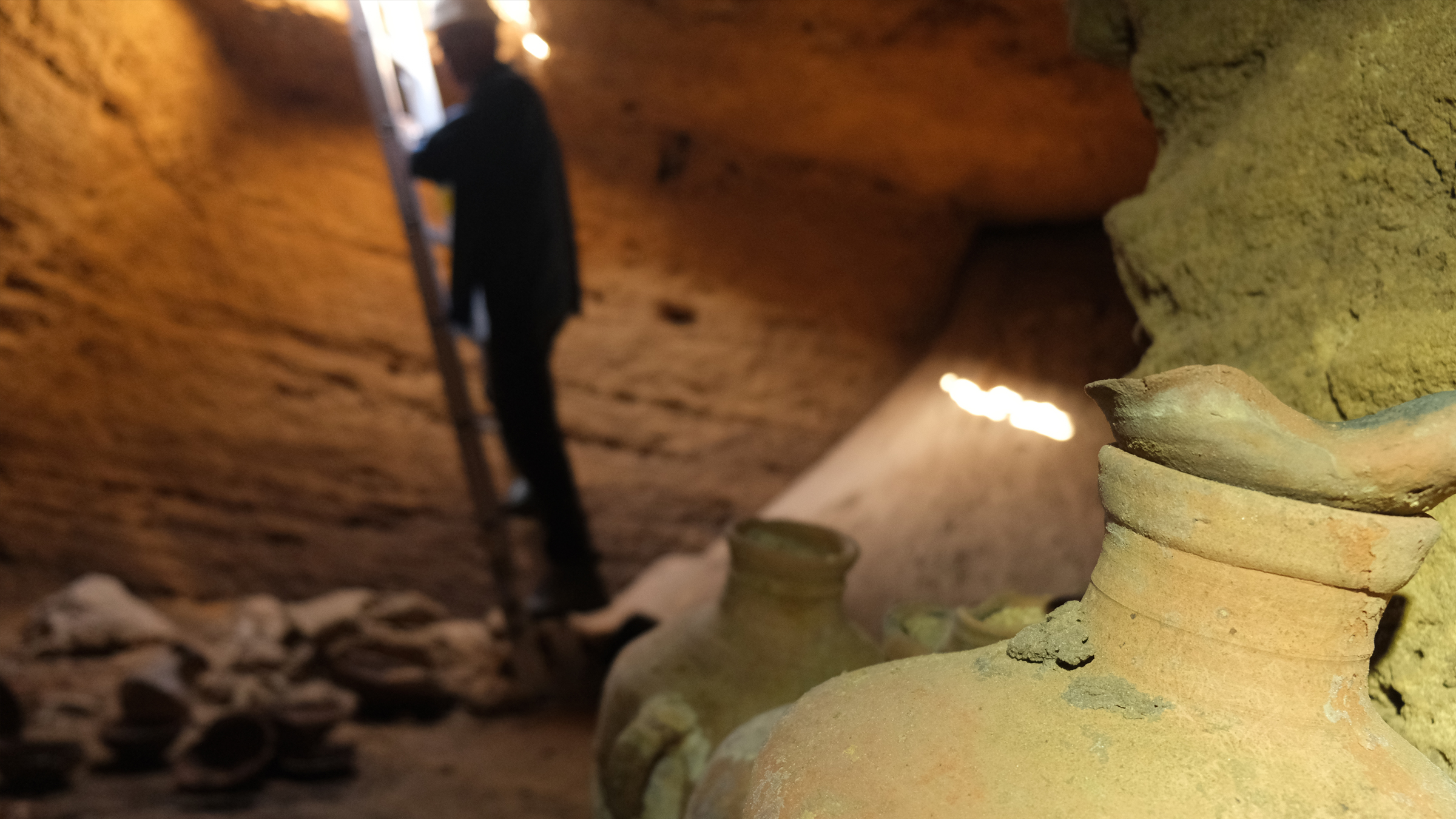3,300-year-old cave 'frozen in time' from reign of Ramesses II uncovered in Israel
"This is a once-in-a-lifetime discovery."

Archaeologists in Israel have discovered an "exceptional" cave that ancient people sealed 3,300 years ago, hiding grave goods and possibly human burials within it, just yards from a beach south of Tel Aviv.
Use of the cave dates to a time when the ancient Egyptians, led by Ramesses II (also spelled Ramses and Rameses) — who reigned from about 1279 B.C. to 1213 B.C. — ruled what is now Israel, the Israel Antiquities Authority (IAA) said in a statement. During the time of Ramesses II, Egypt controlled an empire that stretched from modern-day Sudan to Syria.
Construction workers operating a mechanical digger in Palmahim Beach National Park discovered the cave when the machine unexpectedly penetrated the roof of the cave. Archaeologists with the IAA were then called to the scene. The team descended a ladder into the dark cave that "appeared to have frozen in time," with carefully laid-out ceramic and bronze goods — artifacts often associated with burial ceremonies, the statement said. Such goods were thought to have helped the deceased in the afterlife.
Related: Ancient 'ritual bath' and elite villa unearthed by Jerusalem's Western Wall
The archaeologists found dozens of pottery vessels, including deep and shallow bowls, some painted with red, as well as chalices (goblets with wide bases), cooking pots, storage jars, and lamps for lighting, the team said in the statement.
Some of the cave's crafts weren't local. A few of the pottery vessels were manufactured in Syria, Lebanon and Cyprus, Eli Yannai, an archaeologist with the IAA, said in the statement. The team plans to analyze any organic remnants on the vessels to learn more about what may have been inside them.
The cave also contained bronze arrowheads that, based on their orientation, were likely in a quiver that has since decomposed.
Get the world’s most fascinating discoveries delivered straight to your inbox.
"This is a once-in-a-lifetime discovery," Yannai said in the statement. "It is extremely rare to come across an 'Indiana Jones film set' — a cave floor laid out with vessels untouched for 3,300 years, since the Late Bronze Age, about the time of the powerful King Rameses II."
He added that because the cave was sealed, much of it was not looted. "The cave may furnish a complete picture of the Late Bronze Age funerary customs," he said.
It's not clear from the IAA statement if any human remains, or if any inscriptions or artifacts that could possibly identify the individual(s), were found in the cave. The IAA has resealed and guarded the cave since its discovery, but it appears that it was recently looted. An investigation is now underway to find out who the looters were, according to the statement.
Meanwhile, archaeologists are gearing up to analyze the cave's unique preservation. "The news of the discovery of the cave spread like wildfire in the academic world, and we have already received requests from many scholars to take part in the planned archaeological excavation," Eli Eskosido, director-general of the IAA, and Raya Shurky, director of the Israel Nature and Parks Authority, said in the statement.
Originally published on Live Science.

Owen Jarus is a regular contributor to Live Science who writes about archaeology and humans' past. He has also written for The Independent (UK), The Canadian Press (CP) and The Associated Press (AP), among others. Owen has a bachelor of arts degree from the University of Toronto and a journalism degree from Ryerson University.




